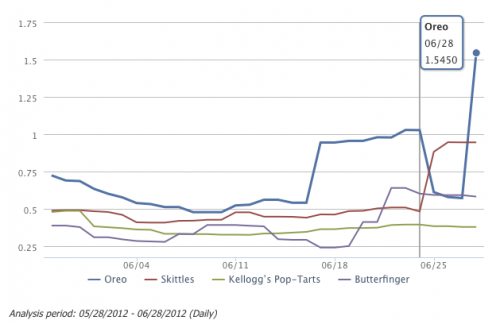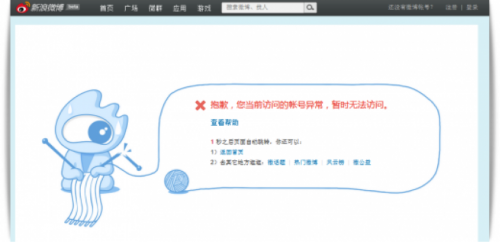We Are Social Asia Tuesday TuneUp #35
Yahoo shuts down Indonesia’s social media site Koprol
Two years into acquiring Indonesia’s location-based social network site Koprol, Yahoo announces that the service will be discontinued as of 28th August. This comes as a result of Yahoo Global’s decision to lay off 2,000 employees worldwide. With a 1.5million user base, Koprol was once a strong contented to Facebook and Foursquare for the Indonesians. The social media scene in Indonesia is one of optimism and energy that is booming by the day; hence, this news comes as a surprise to die hard fans of Koprol. The Jakarta Post reports this as ‘Great expectations crumbled’ as the check-in service was well positioned in the Indonesian market despite presence of similar sites like Foursquare. Only in April, Koprol’s developers announced plans to revamp the site and hence, this decision is speculated to have sprung from Yahoo Global. Experts shed light that the insight here is not that the social media landscape that is struggling in the country but it is Yahoo that is been struggling in recent times. If better managed, the decision to discontinue the opportunistic location based service can be avoided. The root of the business problem seems to have lied in the inability to monetize the service, something that Yahoo would have been aware of two years ago when it acquired Koprol but failed to build a working revenue model.
Sina Weibo tests web forum to diversify
Last week Sina Weibo introduced its VIP service to offer premium features for paid users. In its continuing attempt to diversify, China’s microblogging service has now launched its own bullet board service called ‘Weiba’. The closed beta site, which is currently only available to high profile users such as celebrities, allows for users to create threads and invite participation. Baidu’s PostBar, Tieba is undoubtedly the leader in this space having established for eight years now, growing to become the largest Chinese-language threaded discussion forum in the world. For Sina to publicly release Weiba to compete with Tieba would definitely require for its work to be more than just another forum integrating the microblog.
New York Times gets onto Sina Weibo
The New York Times introduced its fully Chinese version of the well-reputed newspaper’s website. The launch of the website was accompanied with an account on Sina Weibo to leverage off the 300 million registered users on the microblogging site. In a few hours of action, the page saw 3,300 fans. However, not long after, New York Times China’s Weibo account was suspended with no explanation given.
The New York Times China’s website however was not taken down. Real time sharing of breaking news on social media is seems to be the reason behind this suspension, which is now reported to be back and running.
Nexon acquires Japanese social gaming studio, inBlue
Gaming giant NEXON has agreed to acquire Japanese social gaming studio, inBlue for development on mobile platforms. The terms of acquisition and cost of the purchase are yet to be released. The company recently made significant amount of investments in the Korean social gaming developer MOYASOFT. Moving forward, it aims to acquire more expertise in this area of social mobile gaming. It is evident that with the success that Apps like DrawSomething and Words with Friends witnessed, many Social gaming developers have taken to mobile.
Facebook blossoms in the East
Its growth might be slowing in English-speaking countries, but Japanese visitors to Facebook have more than doubled since 2011. It’s a similar story in South Korea, where Facebook is slowly catching up to Cyworld, the home-grown social network contender.
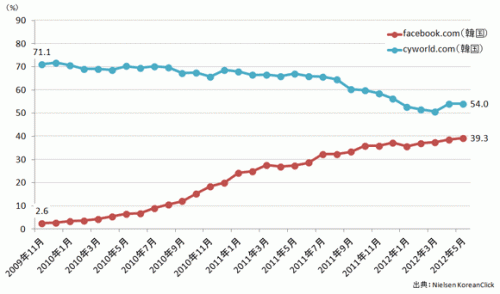
How Facebook fans show their loyalty
Debate has been raging in the social sphere about the meaning of a ‘Like’ and the difference between what marketers think it means and why Facebook users decide to ‘Like’ pages. New research shows that users say that Facebook acts as their loyalty card and it’s how they want to get deals and hear news about the brand.
So how can brands give their Facebook fans more of what they’re looking for? eMarketer analyst Krista Garcia writes:
Through the use of social media, though, retailers and brands can identify and interact with their most profitable internet users. “Loyalty can be won through encouraging word-of-mouth and creating advocates, by raising a user’s social status, by surprising and entertaining shoppers in unexpected ways, and also by listening to customers’ needs and suggestions and responding in a mutually beneficial fashion,” said Garcia.
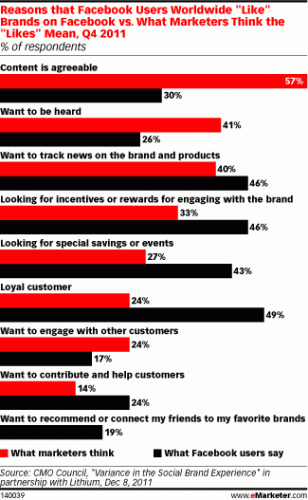
What percentage of fans do Facebook pages really reach?
Facebook pages with fewer than 1,000 fans are the most likely to appear in their fans’ newsfeeds, according to new research from EdgeRank Checker. While pages with 1,000 to 100,000 fans reach 20% – 30% of their fan base, pages above 1 million fans aren’t likely to hit more than 3% – 10% of their fans’ newsfeeds.
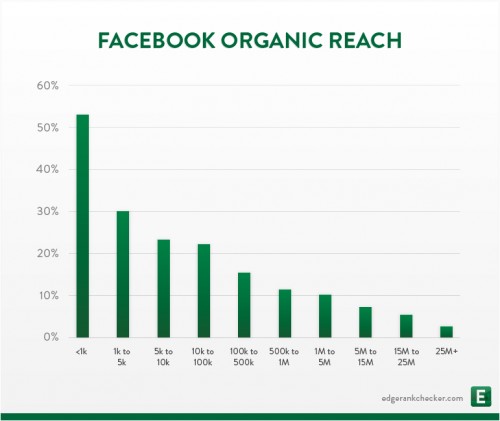
Facebook is a must for brands, but is Facebook advertising?
Although marketers think it’s a no brainer to invest time in creating and updating a Facebook page, they are less sure about spending money on Facebook Ads, according to a survey from Ad Age and Citigroup. Nearly 90% said they implement new content without advertising at all. A lack of data, customer support and successful ROI are marketers’ major complaints with Facebook as an advertising platform.
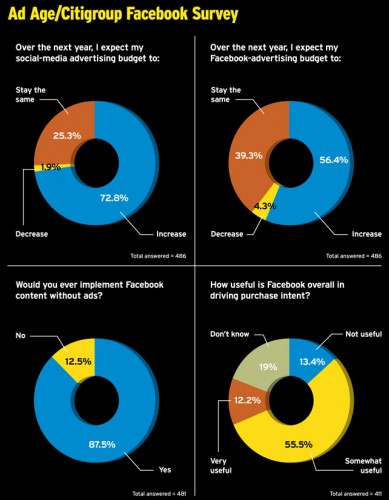
Is Facebook testing a ‘Want’ button?
A watchful developer noticed that a ‘want’ tag was added to Facebook’s Javascript kit, but so far the button has not been publicly listed. Developers could create a ‘want’ action through OpenGraph, though Facebook has just disabled this and is remaining tight-lipped about whether this feature will be rolled out at all.
Introducing the Facebook ‘follow’
Facebook has created a new action that allows users to get updates about other users’ in-app activities, meaning that users can see updates in their newsfeed from that famous writer they follow on a social news app or a celebrity chef from a food app. Facebook is showing how much is values Open Graph by placing even more of it in users’ feeds.

Facebook updates iOS and desktop apps and vanity URL requests
A number of small features have been implemented this week, including an update to the Messenger and Pages Manager apps. Page admins can now check and reply to direct messages through the iOS app. Facebook Messenger got a few nice design changes, such as its new logo, larger photos and being able to switch between conversations through notifications. Friends of friends can also be included in messages.

Facebook on desktop has also made it easier for page admins so see who they are posting as when updating a page through a ‘voice’ bar that appears at the top of the page. And marketers will breathe a sigh of relief, as they can now change a page’s vanity URL without submitting a request to Facebook.
Instagram for iOS gets first update since Facebook’s acquisition
Instagram nixed its “Popular” tab and replaced it with “Explore”, where users can still see the most liked photos, but can also search for photos from certain users or by hashtag. The new version of Instagram also ups its dosage of Open Graph, and users can now post photo likes to their Facebook page without leaving the app. But the biggest news of all is Instagram’s new web presence, where users can (finally!) log in, like and comment on photos and edit their profiles.

Twitter says goodbye to LinkedIn
Twitter is taking more control of how and where users see tweets, as it announced the end of its tweet syndication partnership with LinkedIn. What will get the axe next? Third-party apps that essentially copy the Twitter experience sound like they could be on the chopping block, though nothing has yet been specifically named.
Google+ celebrates 250 million accounts, builds in new features
As the social network celebrated its first birthday this past week, Google claimed some interesting statistics about its use:
- 250 million users, 150 million of which are active
- 50% users sign in daily
- 12 minutes on average spent on the site daily
Google again turned on the sappy tap as it looked back on its first year in video form, featuring one of the few places you’ll see Richard Branson, Barack Obama and the Muppets in the span of a minute.
Google’s Vic Gundotra said that every day for the last year, save for a lone Friday in August, the Google+ team shipped a new build every day. And to celebrate, they’re building even more, rolling out Google+ for tablets and adding an events tab, where users can make more custom and personal invitations to send out.
But does Google+ have a reason to celebrate? Traffic to the site has been stagnant in the UK, and we can all agree that it’s no Facebook. But Google is doing well to build up its army, and Google+’s new events tie nicely into Gmail/Google Calendar. Time will tell whether Google’s push will turn out successfully.
Google’s +1 recommendations go web-wide
Google has now rolled out its recommendation button to all parts of websites, and when you hover over the +1 button, you can see recommendations from friends on related pages on the site.
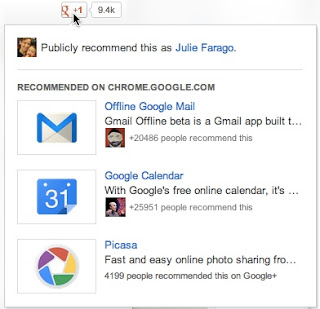
YouTube’s new Marketplace wants to connect YouTube stars and brands
YouTube is making it even easier for viral sensations to connect with brands to produce content. The newly launched Marketplace allows content creators to create a profilethat indicates what they do, what’s worked for them in the past and their best-suited demographics that brands can search for by content, target demographics and keywords. We’re interested to see how well YouTube can play matchmaker.
Foursquare looks to integrate third-party apps
Foursquare boasts a well-sized developer community of 25,000, and now it’s giving them some in-app love. Foursquare is testing ‘Connected Apps’, which pull outside apps into Foursquare. Want to know a healthy dish at a restaurant or the weather when you check in to a new city? Foursquare has partnered up with 11 well-known companies so far, including Instagram, Lufthansa and The Weather Channel, and this moves Foursquare even further beyond being just the ‘check in’ app.
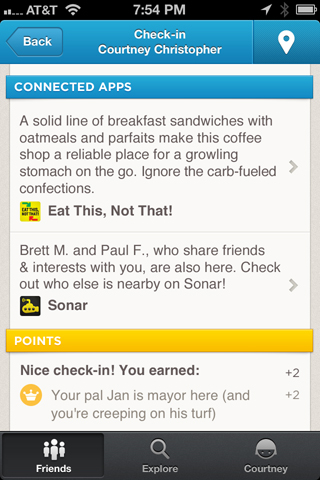
Tumblr offers pinned posts for $5
This is yet another way for cheap, self-service advertising that Tumblr has released this year that’s leaving no questions about its plans for monetisation. The new feature, called pinned posts, makes the post in question stick at the top of followers’ dashboards for 24 hours, though users can unpin them after they first appear.
CIPR offers guidance for marketers wanting to edit Wikipedia
The UK’s Chartered Institute of Public Relations, supported by its Canadian and Australian counterparts, has issued a document that will try to bring clarity to whether marketers or their agencies should be editing Wikipedia entries about their or their clients’ brands, products or organisations. The short answer is no, but the CIPR suggests proposing changes to the Wikipedia community of editors who regularly make amendments to entries.
The ‘Summer of Sport’ comes to Facebook from BBC Sport
Don’t have tickets to Wimbledon or the major Olympic events? Then grab your computer, log onto Facebook and sit front row with BBC Sport, which is launching an app that will show a live stream of the tennis and up to 24 streams of Olympics coverage. The app has a host of features, including chatting with your Facebook friends who are also watching the stream, a commenting system and in-feed updates to show you what your friends are watching through Open Graph. A beta version is out now for Wimbledon.
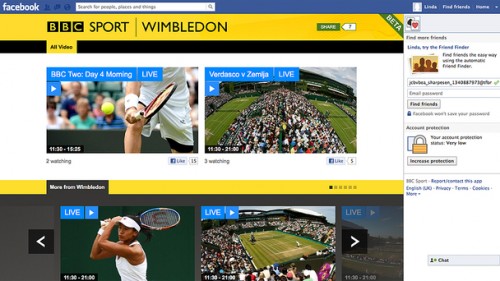
Tallyho! The Marmarati’s grand return
Last week here at the We Are Social towers, we re-launched Unilever’s secret society for Marmite lovers as the group seeks to recruit a new set of fanatics of the dark elixir. The Marmarati is made up of super-fans who are incredibly engaged with the brand in their underground Facebook group. Want to see what it takes to be a part of this group? Take a look at the ever-growing list of challenges and the glorious gallery of submissions from potential future members and the Marmarati themselves.
Uniqlo develops creative Pinterest campaign
Thumbs up to Uniqlo’s clever campaign on Pinterest, where lots of users are hanging out but where brands have been slow to develop unique content. But the Japanese clothing company takes that head on, and its latest campaign goes down a treat.
Innocent hands out Olympic tickets when followers ‘tweet for a seat’
Is this one of the last chances for tickets to the Games? Innocent has been running a cleverly simple Twitter campaign that asks followers to tag a friend they’d like to take to the Olympics and the #tweetforaseat hashtag and why they’d like to go. Innocent had previously planned to host a festival promoting its Olympic sponsorship, but pulled it because of poor ticket sales, an overcrowded schedule this summer and typical British summer weather.
McDonald’s courts controversy as it works with bloggers
For a company that often gets flogged in the public eye, coming up with a community engagement strategy isn’t an easy task. McDonald’s launched a platform called Family Arches last August, where bloggers could get access to information about its food, nutrition and charitable giving. This community is mostly made up of mum bloggers, who, according to McDonald’s social media director, are some of the most vocal opponents of fast food.
Oreo tries to spread the love through social media
Oreo stepped right into the line of fire last week when it posted a picture on its Facebook page of a rainbow-filled Oreo with the words “June 25 | Pride” underneath.

The page is littered with negative comments, but Oreo has racked up 260,000 likes, 48,000 comments and 82,000 shares in the span of a week. How’s that for engagement? Although there have been scores of disturbingly negative comments, Oreo has doubled its new fans per day, and its likes, comments and shares are through the roof.
